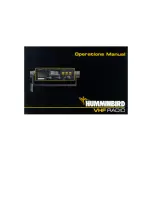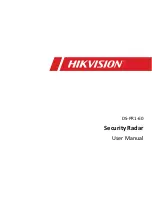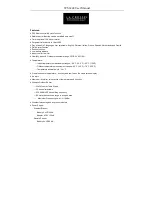
To use this function, select any channel for receiving (for example, a weather channel). Then,
press the DUAL button. The radio remains tuned to the channel you selected, but will switch to
Channel 16 immediately if a signal is detected.
To cancel dual watch, press the Dual button again.
Placing a Call
Before beginning transmission, select the channel to use and monitor it to make sure you will
not interrupt any transmission in progress. (Each channel has a specific purpose; be sure to see
the “Table of Marine Channels” later in this manual).
Too place a call, press the CH 16 button to select Channel 16. Depress the microphone button
and call the party you want to contact. Give your call sign; if you have no call sign, identify
yourself by vessel name and license name. Speak into the microphone clearly and at a normal
voice level.
Specify the channel for the receiver to tune to. Release the microphone button and wait for a
reply. After the receiver confirms, tune to the specified channel.
Release the microphone button whenever you need to receive from the other party. To resume
speaking to the other party, depress the microphone button and again, speak at a normal voice
level.
Note: You must give your call sign at the end of any transmission that lasts for more than 3
minutes. Break and give your call sign at least once every fifteen minutes during long ship-to-
shore calls. Limit unanswered calls to no more than 30 seconds, and do not repeat a call for more
than two minutes.
Return to Channel 16 when the call is finished, or use the dual watch function to monitor
Channel 16 while you receive on another channel.
(For instructions on distress calls, see “Placing an Emergency Call” later in this manual).
Answering a Call
Calls from other craft should come in only on Channel 16. When you are set to receive on
Channel 16, you will hear any call made on that channel in your area. If a call is made on
Channel 16 while you are using the dual watch function, the VHF radio will switch immediately to
Channel 16 and you will hear the call.
To answer the call, depress the microphone clearly, at a normal voice level. Release the
microphone button to receive from the caller. The caller will normally specify the channel for you
to switch to; if not, specify a channel yourself.
Rotate the CHANNEL knob left or right until the specified channel number is displayed. You will
receive transmissions from the caller as long as the microphone button is not depressed. To reply
to the caller, depress the microphone button and again, speak at a normal voice level.
Scanning
To use the VHF radio’s scan feature, press he SCAN button. The radio immediately begins
scanning channels in the currently selected frequency band and will stop at the first channel for
which a signal is detected. Scanning resumes from that channel when a signal is no longer
present.
To cancel scanning, press the SCAN button again, or use the microphone button or CHANNEL
knob. Scanning is also canceled if you press the CH 16 button.
Summary of Contents for DC 25
Page 1: ......





























